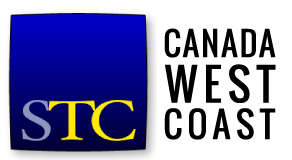Greetings,
Joe Welinske of WritersUA is offering a free seminar of our choice from one of the topics listed below. Please RSVP to president@stcwestcoast.ca no later than Friday, August 14th with your selection and preferred time of weekday (i.e., morning, lunch hour, or evening). Once I have the results, I will post details of the offering on this website, and it will also be mentioned via Coast Lines.
Note: Each seminar lasts one hour in duration and will be delivered live by Joe Welinske, date TBD for September.
1. Key Trends in Software UA
User assistance is much more than “Help.” It encompasses a wide range of skills and technologies that are combined to improve the software user’s experience. We contribute through wizards, tutorials, and web-based training. We develop and populate knowledge bases and content management systems. Printed manuals and their PDF equivalents are still an important element of our documentation sets. Many of us are now embedding helpful content directly into the user interface. We are involved with usability testing, localization, testing, quality assurance, and branding. This presentation provides a cutting-edge overview of the latest trends in software user assistance, defines the key terminology, highlights the most important technologies, and offers predictions on future directions of our field.
2. Usability Testing for Print Documentation
Most of my work over the past twenty years has been spent designing and creating communication components which are delivered digitally – Help files, wizards, UI text, knowledge-bases, etc. A recent project got me back in touch with the print medium and allowed me to apply usability testing techniques that weren’t on the radar for technical writers a few years ago. Blink Interactive asked me to lead a project for one of their clients – ACT. This is the ACT that develops and administers the test that is so familiar to hundreds of thousands of high school students. The ACT had suspicions that several of their printed publications were not well suited to their student customers. The content used in these printed publications was also used on their web site and they wanted to make sure the students were getting important information related to the test.The session describes the usability testing that led to significant changes in the design of the documentation.
In addition to taking about the case study, I will discuss various methods and skills that can be used to effectively test print documentation.
3. An Aggressive Approach to Concise Writing
Writing concisely is one of the fundamental skills central to any mobile user assistance. The minimal screen real estate can’t support large amounts of text and graphics without extensive gesturing by the users. Using small font sizes just makes the information unreadable unless the user pinches and stretches the text.
Even outside of the mobile space, your ability to streamline your content improves the likelihood it will be effectively consumed by your target audience.
This session offers a number of examples and techniques for reducing the footprint of your prose while maintaining a quality message. The examples used are in the context of mobile UA but can be applied to any technical writing situation.
4. Trends in Mobile User Assistance
Smartphones have sparked a huge, new software segment – the mobile app. This creates an important pair of questions for user assistance professionals: What is our role going forward in mobile and how can we prepare to take that on? User Assistance does have a role in supporting mobile apps. As the mobile app market continues to soar, this is becoming the next frontier for user assistance professionals. This session provides an overview of current issues regarding design, writing, tools, and planning of your mobile UA.
Mala Rupnarain is the past president of the STC Canada West Coast chapter.

